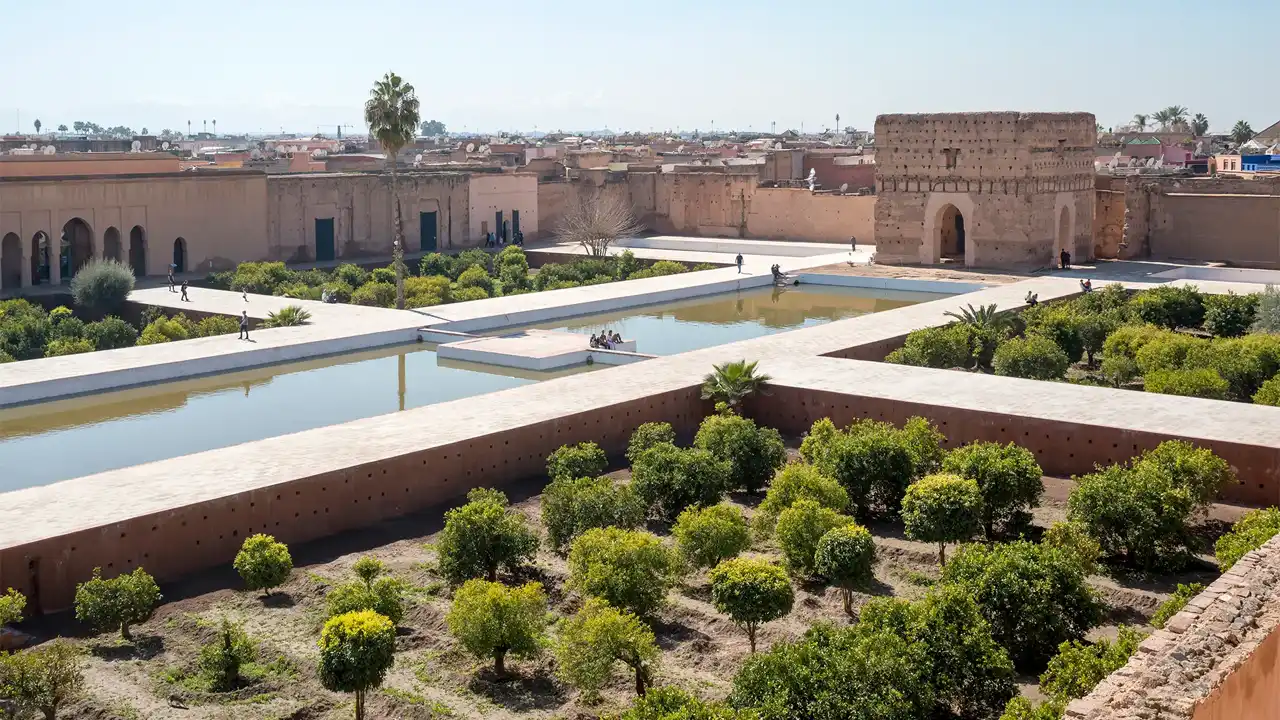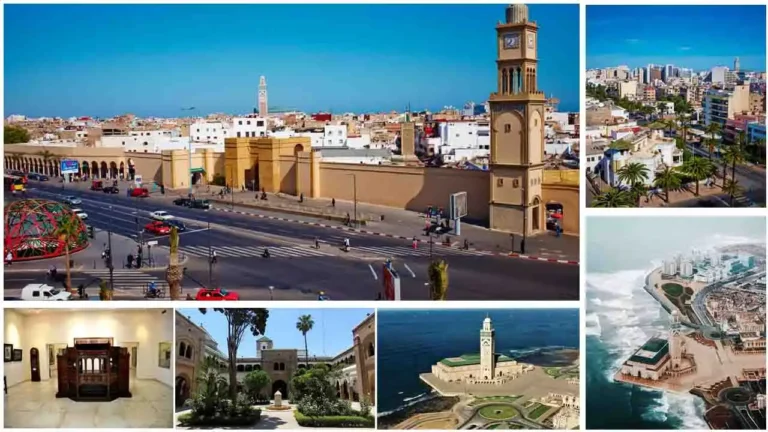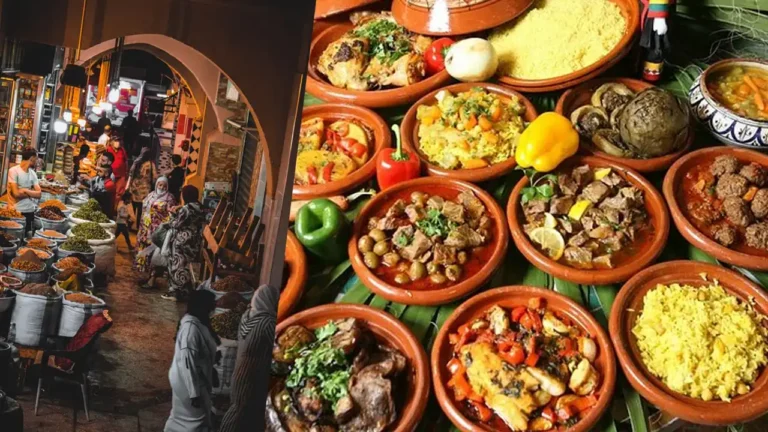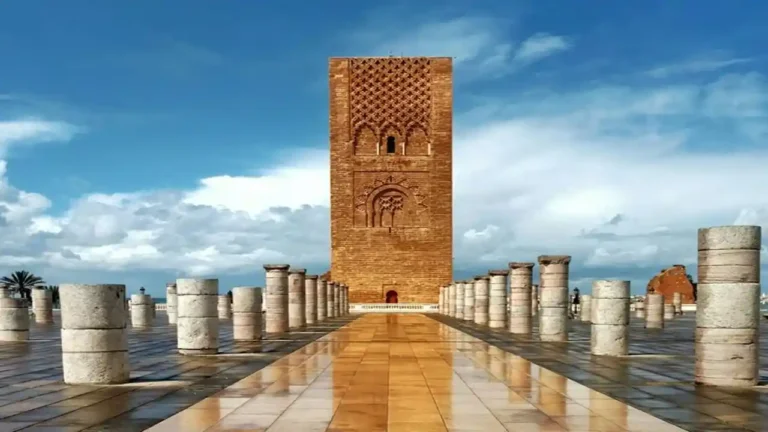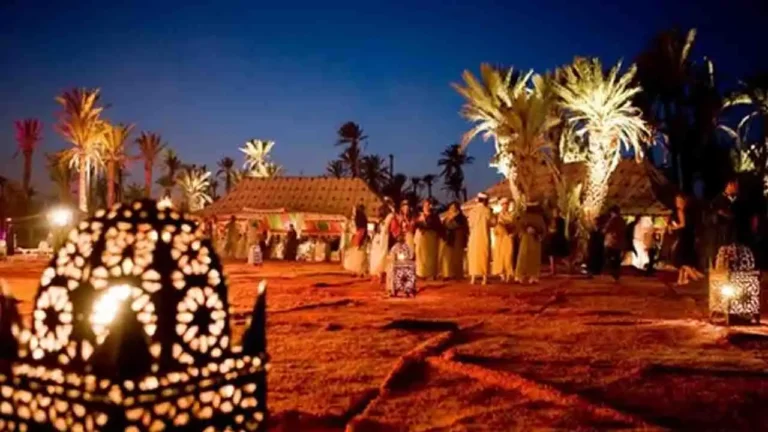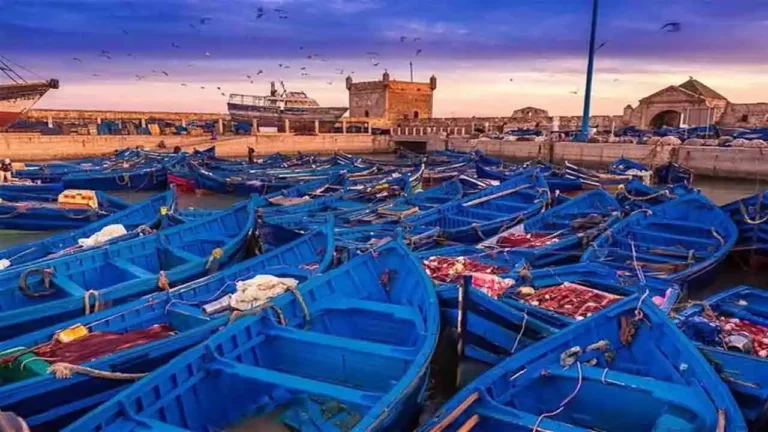El Badi Palace: The Lost Pearl of the Saadian Dynasty’s Architecture
Introduction
El Badi Palace is more than just a historical landmark; it is a timeless testament to the grandeur of the Saadian dynasty and its architectural prowess. Nestled in the heart of Marrakech, this once-majestic palace serves as a window into Morocco’s royal past, offering a glimpse of the artistry and cultural sophistication that defined the 16th century.
Commissioned by Sultan Ahmed Al-Mansur to commemorate the Saadian victory at the Battle of the Three Kings, El Badi Palace stood as a beacon of wealth, power, and artistic achievement. Though much of its splendor lies in ruins today, the palace remains one of Marrakech’s must-visit historical sites, where visitors can immerse themselves in the rich heritage of the Saadian era.
Historical Context: The Rise of the Saadian Dynasty
Origins of the Saadian Dynasty
The Saadian dynasty emerged as a significant force in Morocco during the early 16th century. Descendants of the Prophet Muhammad, the Saadians gained prominence by leading resistance efforts against Portuguese invaders in southern Morocco. Their military victories not only protected the region but also solidified their authority, allowing them to unite Morocco under their rule.

The Battle of the Three Kings
The turning point for the Saadians came in 1578 at the Battle of the Three Kings. This decisive confrontation saw the Saadian forces, led by Sultan Ahmed Al-Mansur, triumph over the Portuguese army commanded by King Sebastian. This victory not only cemented the Saadians’ political dominance but also marked a pivotal moment in Moroccan history.
To commemorate this monumental success, Sultan Ahmed Al-Mansur envisioned El Badi Palace—a structure that would rival the greatest Islamic palaces of the era. It was designed to reflect the wealth, prestige, and cultural achievements of the Saadian dynasty at its peak.
Legacy of the Saadian Dynasty
The Saadians ruled Morocco for several decades, leaving behind a legacy of architectural and cultural accomplishments. El Badi Palace stands as one of their most enduring symbols, offering a glimpse into a period of opulence and artistic brilliance. Today, the ruins of the palace continue to attract visitors eager to explore Morocco’s royal history.
Building El Badi: A Testament to Wealth and Prestige
Vision and Purpose
El Badi Palace was commissioned by Sultan Ahmed Al-Mansur as a symbol of the Saadian dynasty’s power and wealth. His ambition was to create a structure that would rival the renowned palaces of the Islamic world, such as the Alhambra in Granada and the Topkapi Palace in Istanbul. The palace was intended not only as a royal residence but also as a statement of cultural sophistication and international influence.
Luxurious Materials
The construction of El Badi Palace was a monumental undertaking that spanned over 15 years. Sultan Ahmed Al-Mansur spared no expense, importing materials from around the world to showcase the Saadian dynasty’s immense wealth. Italian marble from Carrara, Sudanese gold, and onyx adorned the palace, creating an atmosphere of unparalleled luxury.
These lavish materials were complemented by the work of skilled Moroccan craftsmen, who blended traditional Islamic design elements with local architectural styles. The result was a structure that embodied both Moroccan identity and the grandeur of the Islamic world.
Architectural Marvel: The Layout and Design of El Badi Palace
Grand Courtyard
At the heart of El Badi Palace lies its expansive courtyard, measuring over 135 meters long and 110 meters wide. This vast open space, once filled with orange trees, gardens, and elegant pathways, created a serene yet grand environment. Four reflecting pools, symmetrically placed, added an element of tranquility and emphasized the harmony inherent in Islamic architectural design.

Key Structures
The palace was surrounded by pavilions and royal chambers, each meticulously crafted to reflect the splendor of the Saadian dynasty. The Koubba el Khamsiniya, the most iconic pavilion, stood out with its intricate stucco carvings, zellij tiles, and ornate wooden ceilings. These features showcased the mastery of Moroccan artisans and their ability to blend local aesthetics with Islamic design principles.
Fusion of Styles
El Badi Palace was a unique blend of Moroccan and Islamic architectural traditions, influenced by Andalusian styles. The symmetry of its layout and the attention to geometric precision were hallmarks of Islamic design, while the use of local materials and craftsmanship gave the palace a distinct Moroccan character.
Lasting Impressions
Although much of the palace now lies in ruins, visitors can still admire its foundational structures and imagine its former grandeur. The harmony of the design, the balance of the spaces, and the richness of its decorations speak volumes about the Saadian dynasty’s ambitions and artistic vision.
Decline and Ruin: The Palace’s Fall Under the Alaouite Dynasty
The Saadian Decline
After the death of Sultan Ahmed Al-Mansur in 1603, the Saadian dynasty began to wane. Internal conflicts and struggles for succession weakened their hold on power, leaving the kingdom vulnerable to new rulers. This decline marked the end of an era of opulence, with El Badi Palace no longer at the center of Morocco’s political life.
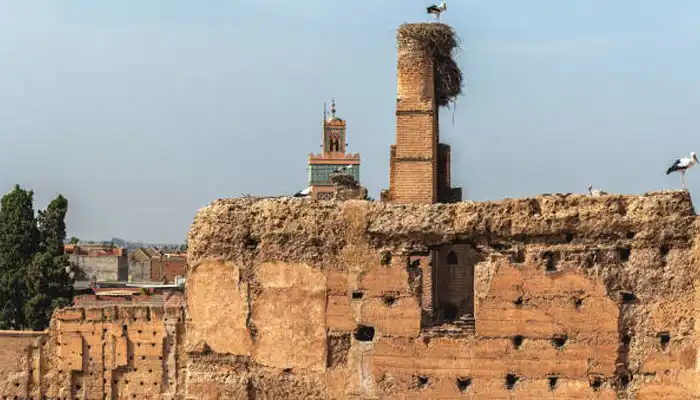
Sultan Moulay Ismail’s Ambition
The rise of the Alaouite dynasty brought a dramatic shift in Morocco’s political and architectural landscape. Sultan Moulay Ismail, one of the most powerful rulers of the Alaouites, sought to erase the legacy of the Saadians and assert his dynasty’s dominance. In pursuit of this goal, he ordered the dismantling of El Badi Palace in the late 17th century.
Materials from El Badi, including its prized Italian marble and Sudanese gold, were stripped and repurposed to construct Moulay Ismail’s imperial city in Meknes. This act of destruction not only symbolized a break from the Saadian past but also highlighted the impermanence of even the grandest structures.
From Grandeur to Ruin
What was once a marvel of Islamic architecture became a shadow of its former self. The once-grand walls of El Badi Palace crumbled, and its courtyards were left abandoned. Yet, even in its ruined state, the palace retained its historical significance as a testament to the Saadian dynasty’s achievements.
A Reminder of Fragility
The fall of El Badi Palace serves as a poignant reminder of the fragility of power and grandeur. Its story reflects the shifting tides of Morocco’s dynasties and the impermanence of human ambition. Today, the ruins of El Badi remain a symbol of the Saadian dynasty’s former glory and a fascinating chapter in Marrakech’s royal history.
Preservation and Restoration: Protecting a Piece of Marrakech’s Heritage
Early Restoration Efforts
In the 20th century, growing awareness of Morocco’s cultural heritage sparked efforts to preserve historical landmarks like El Badi Palace. The Moroccan government, alongside cultural preservation organizations, began work to stabilize the ruins and prevent further degradation. These efforts were part of a broader initiative to safeguard the nation’s rich architectural history, including mosques, palaces, and other significant sites.
Uncovering the Past
Archaeological excavations at El Badi Palace have unearthed valuable artifacts, offering new insights into the Saadian dynasty’s daily life and artistic achievements. These discoveries have deepened understanding of the palace’s original grandeur, allowing historians to reconstruct its story more vividly.

Modern Restoration and Use
Today, restoration work continues to focus on maintaining the structural integrity of the palace. Key features such as the central courtyard and the pavilions have been stabilized to ensure their survival for future generations. The site also serves as a venue for cultural events, including festivals, exhibitions, and concerts, transforming it into a dynamic space that celebrates Marrakech’s history.
Heritage Tourism
El Badi Palace is now a cornerstone of Marrakech’s tourism economy, drawing visitors from around the world. Preservation efforts have ensured that the palace remains accessible to tourists while highlighting its historical and cultural significance. These initiatives reinforce the importance of protecting Morocco’s heritage, ensuring that El Badi Palace continues to inspire and educate future generations.
Modern-Day El Badi: A Tourist’s Guide
Practical Information
Visiting El Badi Palace is a must for travelers exploring Marrakech. The palace is open daily, and as of 2024, the entrance fee is approximately 70 MAD (around 7 USD). Discounts may be available for residents and students with valid identification. For the best experience, visit in the early morning or late afternoon to avoid the midday heat and enjoy a quieter atmosphere.
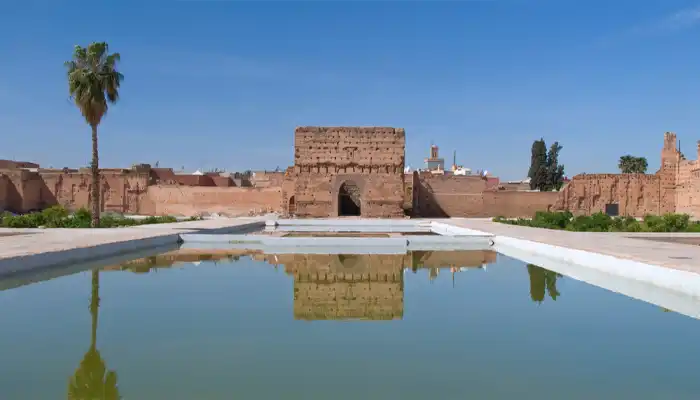
Key Attractions
Despite its ruined state, El Badi Palace offers plenty for visitors to explore. The vast courtyard, with its reflecting pools and towering walls, remains a highlight. From the terraces, panoramic views of Marrakech’s skyline and the distant Atlas Mountains provide excellent photography opportunities.
Be sure to observe the stork nests perched atop the palace walls, adding a unique charm to the site. The underground tunnels and dungeons are also worth exploring, offering a glimpse into the palace’s storied past.
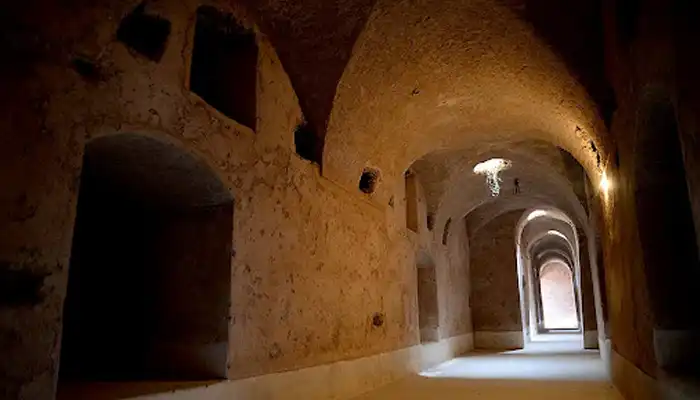
Photography Tips
To capture the best images, visit during the golden hours—early morning or late afternoon—when the sunlight enhances the orange hues of the palace walls. A wide-angle lens is perfect for showcasing the vast courtyard, while a zoom lens is ideal for close-ups of intricate stonework and the storks that call the palace home.
Practical Tips for Visitors
- Best time to visit: Early morning or late afternoon for cooler temperatures and optimal lighting.
- Duration: Allocate at least 1–2 hours to explore the palace fully.
- Facilities: Limited amenities are available, so bring water and wear comfortable walking shoes.
A visit to El Badi Palace provides a unique opportunity to connect with Morocco’s royal past while enjoying the architectural beauty and tranquil ambiance of this historic site.
Cultural Legacy: The Enduring Importance of El Badi Palace
A Symbol of Saadian Grandeur
El Badi Palace represents the pinnacle of Saadian achievements in art and architecture. It serves as a reminder of the dynasty’s wealth, power, and artistic vision, preserving the legacy of a time when Marrakech stood as a cultural and political center of the Islamic world.
Influence on Moroccan Architecture
The design and construction of El Badi Palace set a benchmark for subsequent Moroccan architecture, influencing structures like the imperial city of Meknes under Sultan Moulay Ismail. Its blend of Islamic and Moroccan styles continues to inspire modern architectural projects in the region.
A Living Landmark
Today, El Badi Palace is more than just a historical site—it is a cultural landmark that connects Morocco’s past with its present. Visitors walking through its ruins, admiring its architecture, and attending events hosted within its walls experience a tangible link to history.
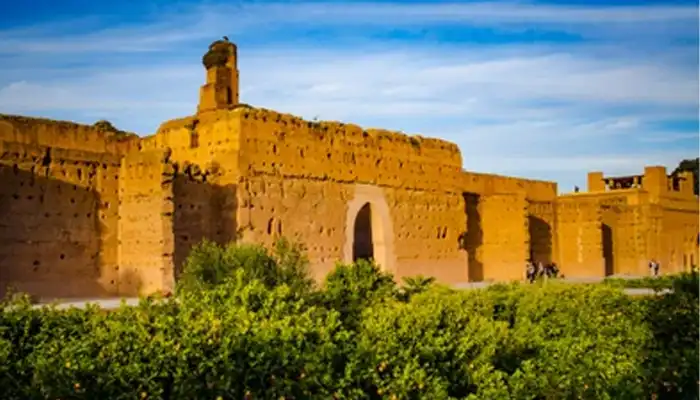
Ensuring a Future for the Past
Preservation efforts ensure that El Badi Palace remains an enduring symbol of Morocco’s rich heritage. Its role in tourism and cultural events highlights the importance of maintaining historical sites not only as relics of the past but as dynamic spaces that continue to inspire and educate.
Conclusion
El Badi Palace, though largely in ruins, remains a powerful symbol of the Saadian dynasty’s wealth, artistry, and influence. From its grand courtyards and intricate designs to its fascinating history of rise, fall, and preservation, the palace offers visitors a unique journey into Morocco’s royal past. Its enduring legacy as a cultural and historical landmark ensures that El Badi continues to captivate and inspire, standing as a testament to the splendor of Marrakech’s architectural heritage.
